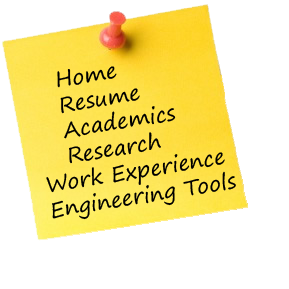Academics
Georgia Institute of Technology, Atlanta, Georgia
- Master of Science in Aerospace Engineering (May 2012)
- Bachelor of Science in Aerospace Engineering (Dec 2009)
- Bachelor of Science in Mechanical Engineering ( Dec 2009 (double major)
Graduate GPA: 3.44
As an undergraduate student I double majored in Mechanical Engineering and Aerospace Engineering.
The Mechanical Engineering degree had a broad scope and exposed me to a wide range of engineering fields such as
- dynamics,
- fluid mechanics,
- machine design,
- manufacturing processes,
- thermodynamics,
- heat transfer,
- control systems
- advanced CAD.
The Aerospace Engineering degree on the other hand was more focused on air vehicles, with courses such as
- low speed aerodynamics,
- high speed aerodynamics,
- jet and rocket propulsion,
- flight dynamics,
- aircraft structures,
- airplane design and
- aeroelasticity.
In graduate school I continued on in the Aerospace Department. Part of my focus was on aerodynamics / fluid mechanics. My graduate courses included
- viscous flows,
- high speed aerodynamics,
- rotorcraft aerodynamics,
- turbine engine aerothermodynamics and
- computational fluid dynamics (CFD).
I also enrolled in graduate level courses with the Mechanical Engineering department to explore my interest in robotics
- finite element analysis (FEA),
- mechatronics and embedded systems
- image processing and machine vision
Here's a tiny sampling of interesting academic projects I worked on: (click to locate on page)
- Grid generator - graduate CFD course
- Euler and Navier Stokes solvers for a supersonic diamond shaped airfoil - graduate CFD course
- FE solver for natural frequencies and mode shapes (free and forced vibrations) - graduate FEA course
- FE code to calculate stress distribution on plate loaded with time varying force - graduate FEA course
- Design and prototype an off-the-grid fan - undergraduate Senior Design (Mechanical Engineering)
- Georgia Tech mascot Buzz - undergraduate Advanced CAD elective
Grid generator for graduate Computational Fluid Dynamics (CFD) course
I created a grid generator for CFD analysis of an airfoil as part of a gradute course project. It was able to generate different types of grids, such as algebraic grids with or without clustering, and elliptic grids with or without clustering and control terms. The code was written in the programming language C++.
Algebraic grid:
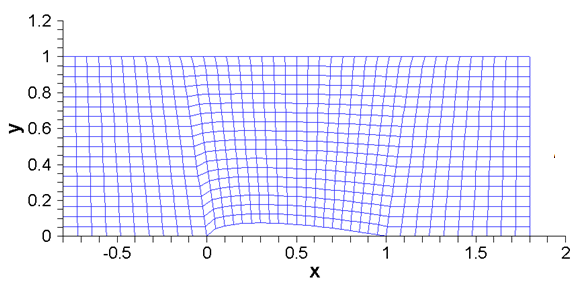
Algebraic grid with clustering in Y:

Elliptic grid with clustering in Y and Middlecoff-Thomas control terms:
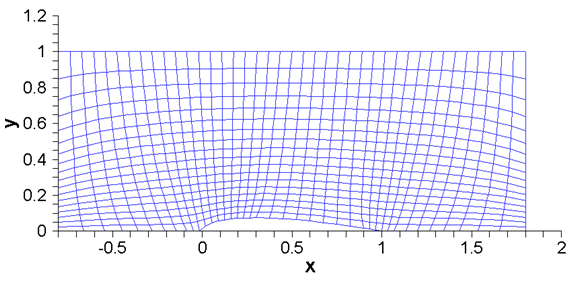
I created an Euler solver to study supersonic flight of a diamond shaped airfoil. Subsequently I wrote a Navier Stokes solver to perform the same study including the effects of viscosity. A diamond shaped airfoil traveling at supersonic speeds produces shock waves, and these are captured by the scheme. I wrote the code in the programming language C# (.NET). The results were visualized using Tecplot.
The following grid was used for the Euler solver. Only half the airfoil was modeled (symmetry). A finer grid was used for the Navier Stokes solver with much more clustering near the airfoil surface.
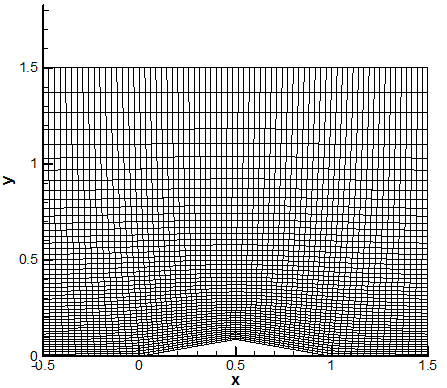
Solution using the Euler solver (2nd order):
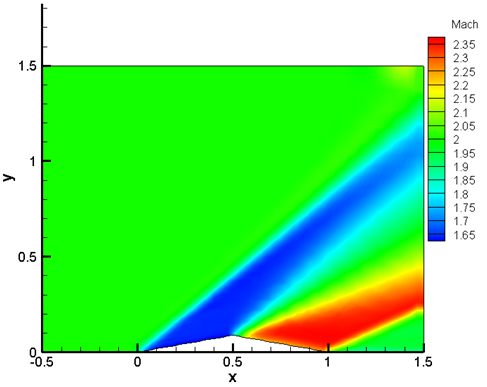
Solution using Navier Stokes solver:
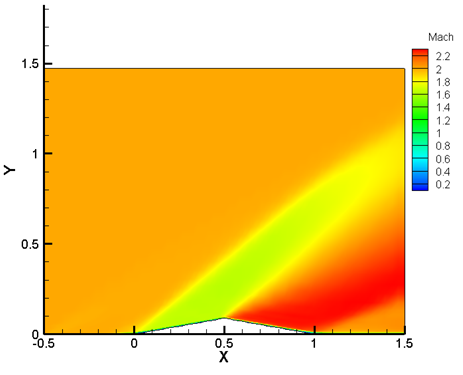
I wrote a finite element code using Kirchhoff Plate theory to find the natural frequencies and mode shapes of vibrating plates for a graduate computational mechanics course. It was used to analyze a freely vibrating plate, as well as a cantilevered plate with forced vibrations. I wrote this code in MATLAB (plus Symbolic Toolbox). This includes the grid generator and the post-processing/visualizations. A few images of the vibrational modes are displayed here.
Mode 1 of freely vibrating square plate:
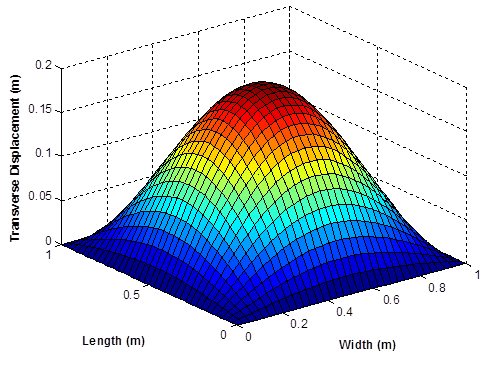
Mode 2 of freely vibrating square plate:

Mode 6 of freely vibrating square plate:
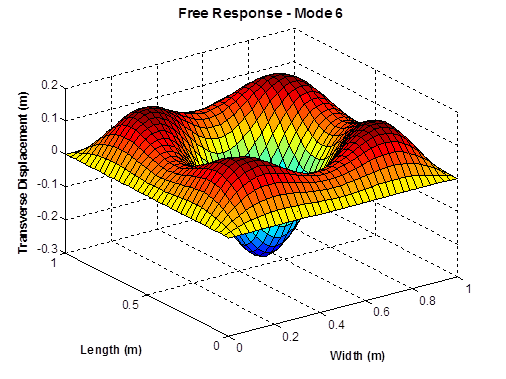
I wrote a finite element code to study loading of a cantilevered plate with a time varying force for a graduate computational mechanics project. Since the load is dynamic, the plate oscillates on loading hence inertial effects were accounted for. The stress distribution over the plate was found at all time points to find the maximum stress experienced. I wrote the entire code in MATLAB.
Schematic:
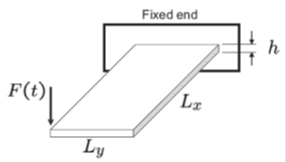
The mesh:

Stress distribution:
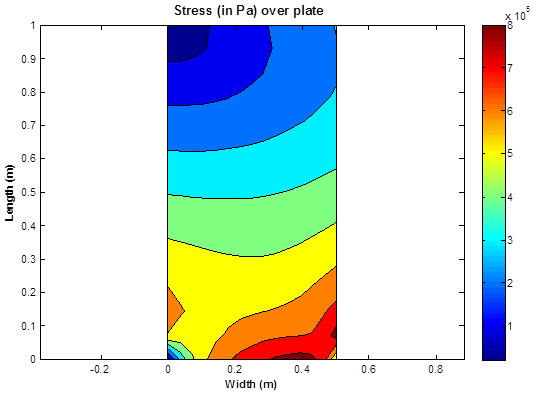
For my undergraduate senior design project in Mechanical Engineering, my team worked on an off-the-grid fan for areas without access to electricity. The idea was to be able to wind it up, store energy in a spring and release it at a reasonable rate.
Two gear trains were designed, one for winding, and the other for unwinding. Here is a schematic:

The cam was designed in order to maintain a steady torque. To save on material costs, an FEA study was performed using Solidworks (COSMOSWorks).
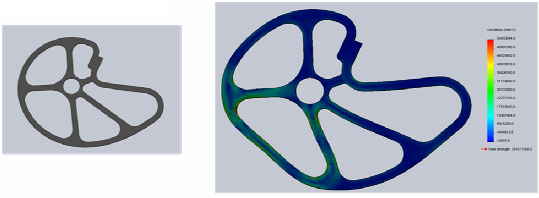
Since the winding and unwinding processes needed to activate different sections of the gear train a clutch was designed and built. It was modeled in SolidWorks.
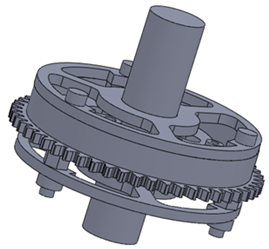
Exploded view:
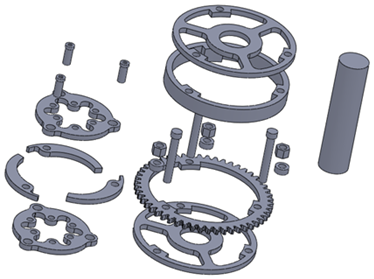
All parts were cut using a water jet. Here's the manufared clutch:
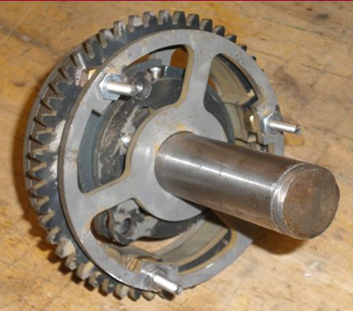
ANIMATION: You can watch an animation of the clutch operating by right clicking here and saving the file to your computer
The gear train:
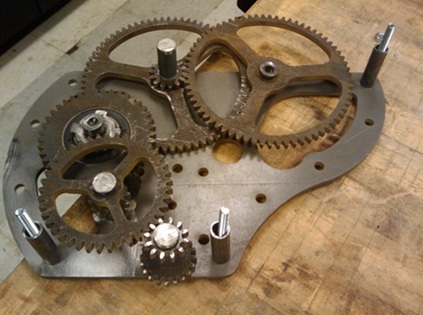
Gear box assembly

CAD model of the fan (SolidWorks)
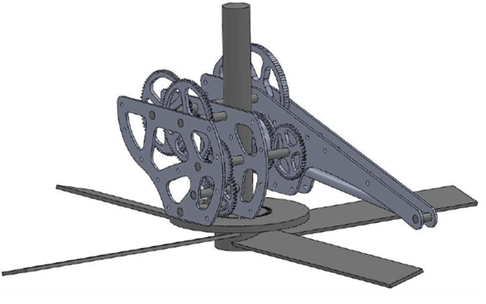
Georgia Tech mascot Buzz for undergraduate Advanced CAD elective
Buzz the yellow jacket is Georgia Tech's mascot. I modeled his head in Unigraphics NX (now Siemens NX) as part of a mechanical engineering advanced CAD elective. The focus was on using surfacing techniques.
Getting started, considering different techniques:
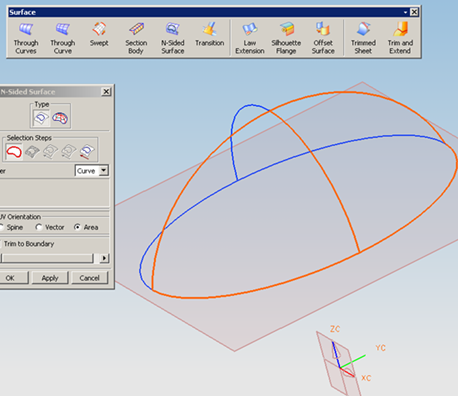
Making progress:
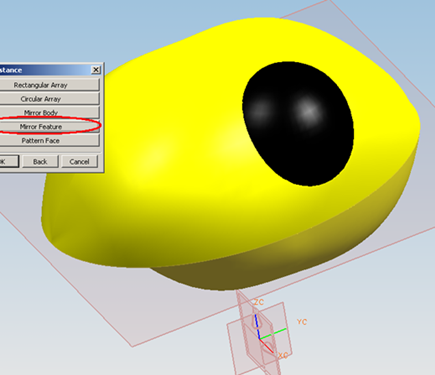
The end result:

The antennae are surfaces following a curved path. The smile was made in 2D and projected onto the 3D surface. Mirror features were used for symmetry.
